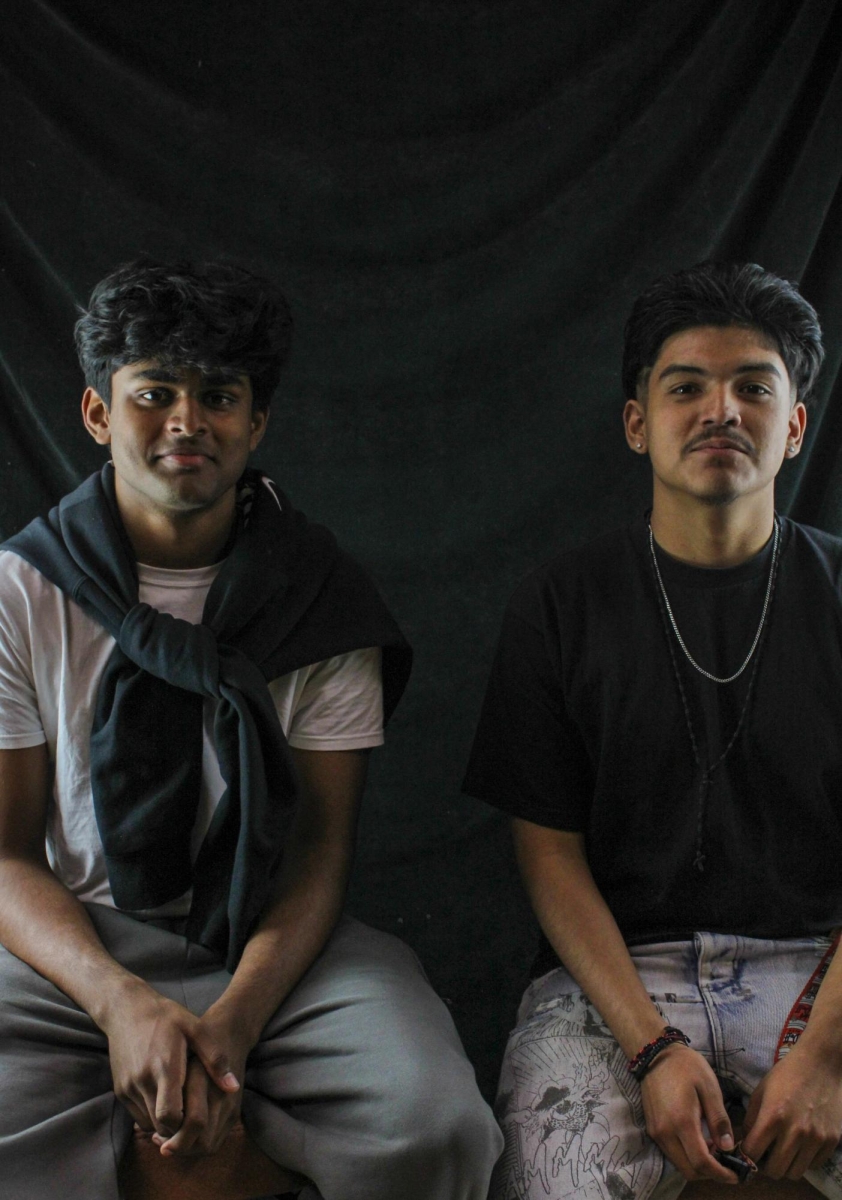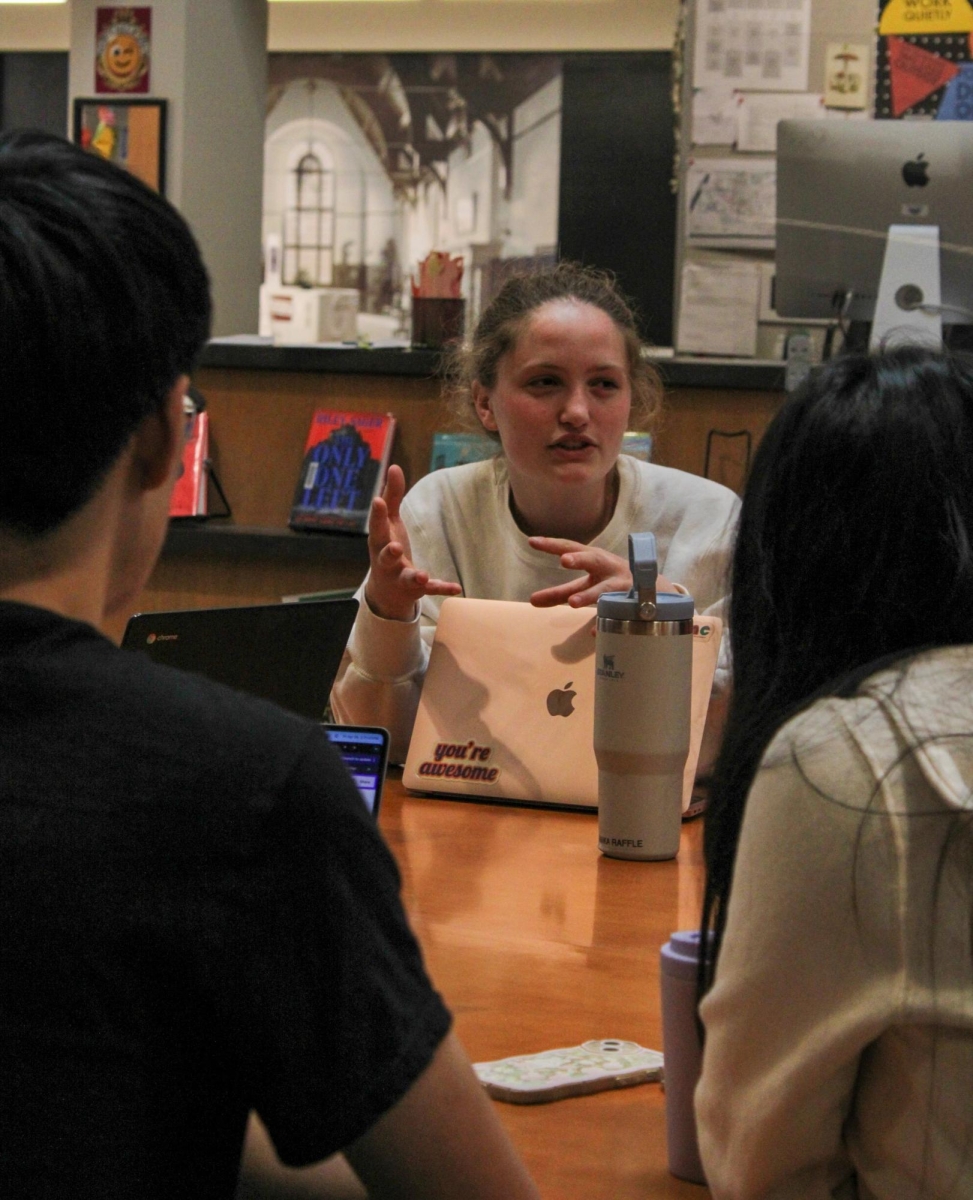Stepping into the Palo Alto High School library during seventh period on a Friday, groups of students sit in unison, discussing class projects. The students, half of them juniors and half seniors, belong to the AP Seminar and AP Research peer-mentorship program, which debuted at Paly this year.
The peer mentorship program was created by Advancement Via Individual Determination (AVID) and chemistry teacher Aparna Sankararaman, AP Seminar teacher Lucy Filppu and AP Research teacher Mary Sano.
The program allows students in AP Seminar, a research class for juniors and seniors, which is the prerequisite for AP Research, to be mentored by seniors currently taking AP Research who have a greater knowledge about the class.
The idea for the program started with Ms. Filppu and Ms. Sano’s desire to help give more opportunities for students to participate in the AP capstone pathway; the pathway requires students to take AP Seminar and AP Research. According to Filppu, this allowed teachers to step back and allow students to lead, which is not frequently seen in classes around Paly.
“I felt that we’re under-utilizing the talents of students to help other students [and] I feel students are our single greatest asset all the time,” Filppu said. “We too often make an adult the one to be the leader and I feel like these kids [AP Research/Seminar students] can do it.”
Filppu, a self-described social justice warrior, saw the program as an opportunity to uplift AVID students, who are traditionally of lower socio-economic status and first-generation college students, into higher-level AP classes with students of higher SES. Although Paly is very diverse, with many students from many unique backgrounds. According to Filppu students tend to gravitate to form cliques based on SES. However, when these cliques are broken, they significantly increase the academic benefits, especially for AVID students. Study done by Raj Chetty, an economist and researcher, showed that first-generation college students increased their GPA by 60% compared to previous years when mixed with higher SES students, which is also known as “economic connectedness.”
The idea behind the peer mentorship program at Paly is similar to Chetty’s research, which allows AVID students to be mentored by previous AP Seminar students who are current AP Research students. Additionally, according to a statement from Filppu,completion of courses allows students to be “well positioned to attend four-year colleges,” a struggle many first-generation students encounter.
After one year of piloting the program, Filppu said she believes that this program has a lot of potential to be a movement in providing a high-level education for AVID students after high school.
“I also think a lot of AVID students are really really capable [of attending a four-year college],” Filppu said. “Their parents maybe didn’t go to college, but they want to do it.”
Ms. Sankararaman also agreed with the statement showing that she has seen tremendous growth in her students over the past years.
“The peer mentoring mentorship program at the beginning of the year, they [AVID students] probably saw their senior peer mentors applying [for college], you know, talking about little variables that has rubbed off on them.” Sankararaman said. “It’s given them the confidence to take more AP classes.”
One senior mentor for the program, Alaap Nair decided to join the program because of the prospect of helping an AP Seminar student.
“I made a lot of mistakes when I was in seminar because it’s a super hard class,” Nair said. “Just transferring my knowledge and all the mistakes I made to help my peer mentor was why I thought it was a great idea.”
Beyond helping his mentee, Nair believes that the mentorship program creates a “symbiotic” relationship that benefits both the mentor and the mentee.
“My peer mentor would listen to my presentation and he gave me feedback on things that I was doing in research,” Nair said. “It’s a beneficial experience for both of us.”
Nair’s partner, Uriel Almanza Guarneros, is part of the AVID class at Paly and plans on becoming the first in his family to attend college.
Guarneros accredits his decision to take AP Seminar to the peer mentorship program as well as the content of the class.
“I thought it was a cool class in general because I could research something I was interested in,” Guarneros said. “The thought of having a peer mentor increased the chance [of joining the class] because I’ll have someone to help me.”
Guarneros has come to enjoy AP Seminar, in great part due to the peer mentorship program, “I got along very well with Alaap and [he] has been helping me more than he has to with my papers which has allowed me to get a good grade in the class,” Guarneros said.
Guarneros plans on taking AP research and becoming a mentor next year.
Selection of peer mentors started with Ms. Sano who has AP research students anonymously write a short paragraph on themselves, allowing seminar students to rank their first choices based on their short paragraph. Then Ms. Filppu and Ms. Sano would pair each student together based on responses.
Many Paly students are busy with their AP classes and other extracurricular activities, with almost no time to help others. It prompts the question: why do Paly students, especially seniors, want to help and mentor younger students?
Filppu believes the reason many students at Paly take the time to help one another can be credited to the feeling it produces.
“I actually think a lot of our really high achieving students are dying to feel purposeful and give back to someone, they may not realize it,” Filppu said. “The best cure for what ails a student is another student.”




